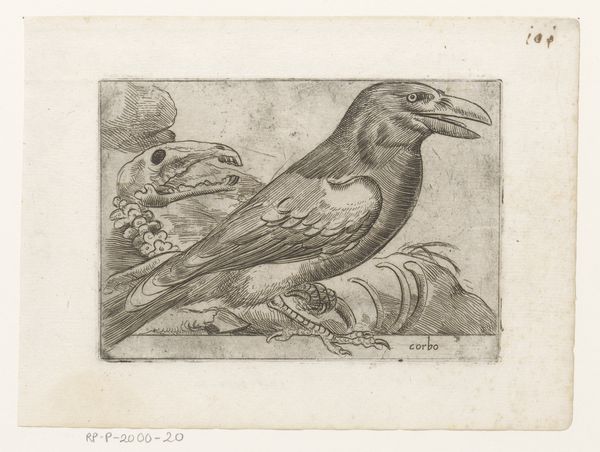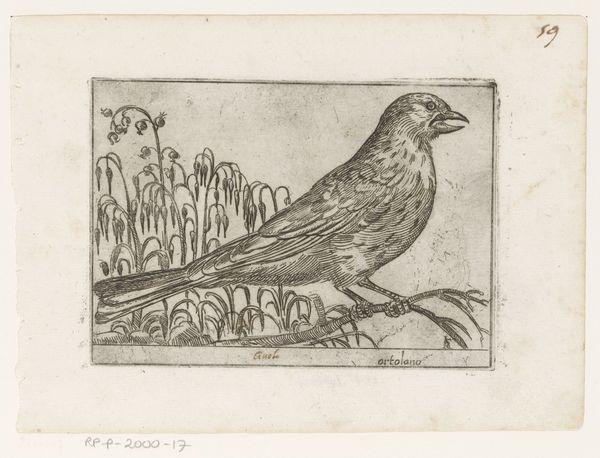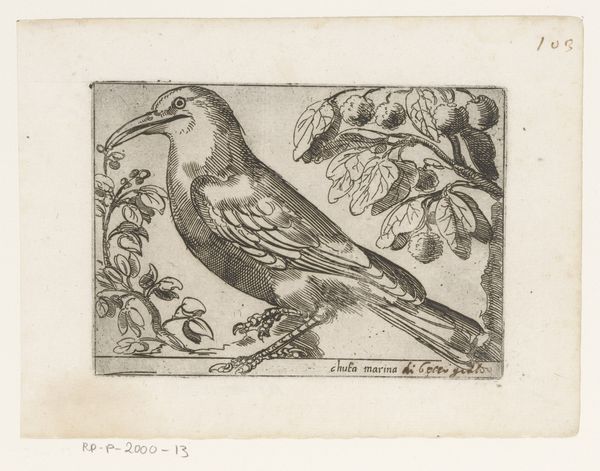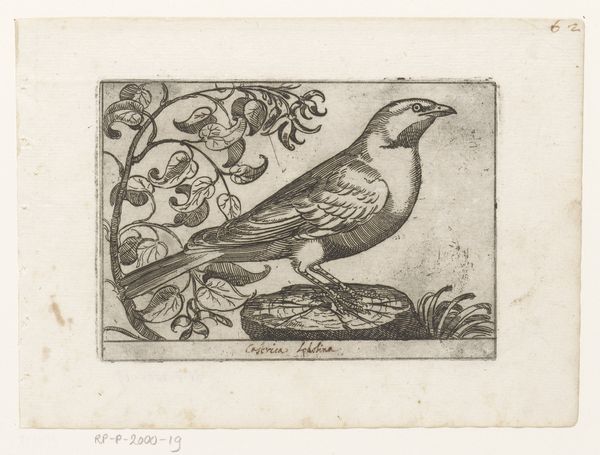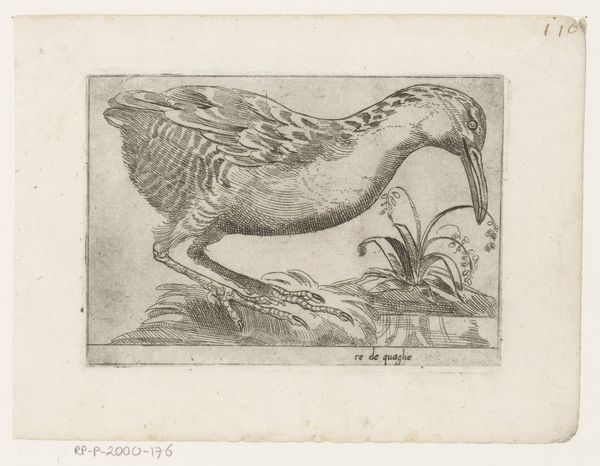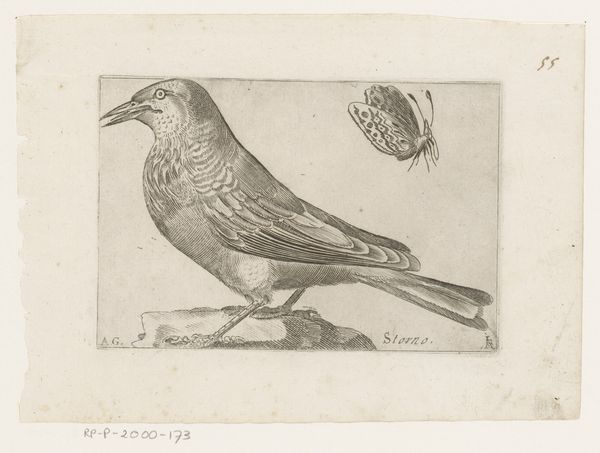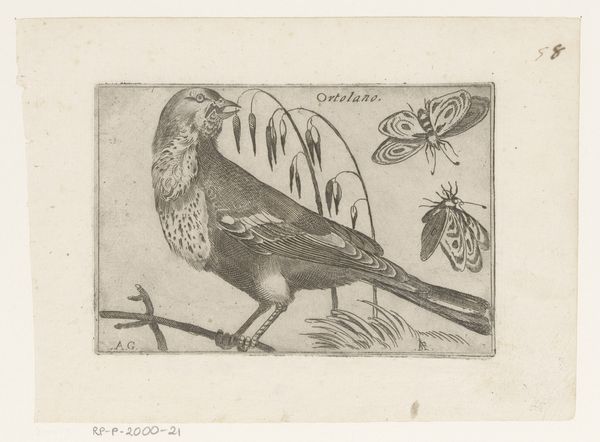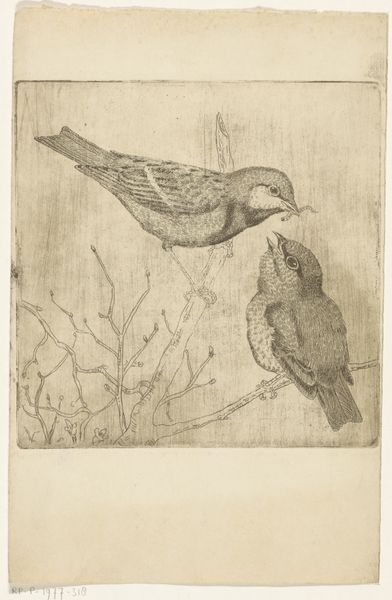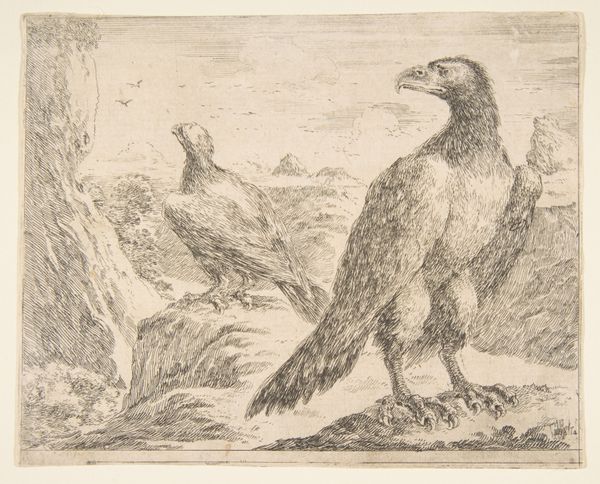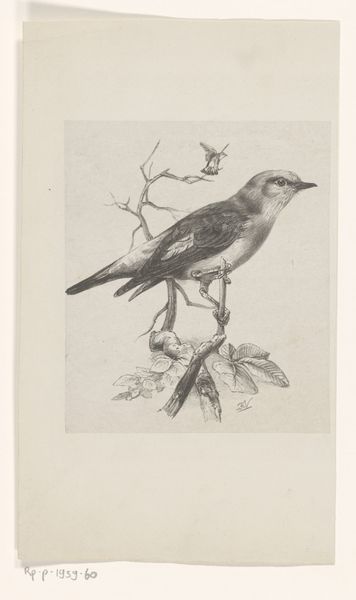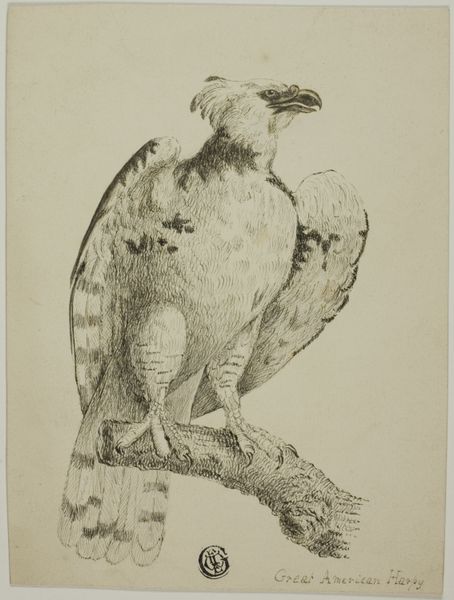
print, engraving
#
animal
# print
#
11_renaissance
#
northern-renaissance
#
engraving
#
realism
Dimensions: height 92 mm, width 137 mm
Copyright: Rijks Museum: Open Domain
Jacques de Fornazeris created this etching of a starling, or Spreeuw in Dutch, in the Netherlands during the early 17th century. This image offers a glimpse into the evolving relationship between art and natural science during the period. While naturalism became fashionable during the Renaissance, so too did the collecting of specimens – displayed in the ‘cabinet of curiosities’ that became popular with wealthy elites. Etchings like this, intended for print, helped to disseminate knowledge about the natural world to a broader audience, beyond those who could afford rare artifacts. Consider the techniques that Fornazeris used, such as line and detail, to create an illusion of depth. These stylistic choices reflect the values of the period, where artists sought to document the world around them with precision and accuracy. The art historian plays a vital role in understanding how social contexts shape our interpretation of images. Through careful research in archives, libraries, and museum collections, we can gain insight into the cultural meanings that a work like this once held.
Comments
No comments
Be the first to comment and join the conversation on the ultimate creative platform.
